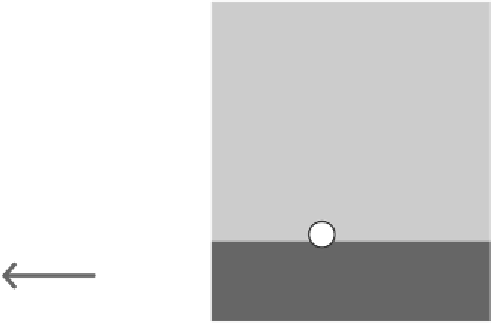Environmental Engineering Reference
In-Depth Information
in the plume was 3.2 % lower than that determined for the reference profile
(Fig. 6). This clearly proofs that a gas exchange takes place between the rising
bubbles and the surrounding water; i.e., that the gas plume strips dissolved
Neon from the water into the rising gas bubbles. It is, however, important to
note that the observed Neon depletion in the water column is an integrated
signal over the time the seep was and is active including horizontal and vertical
mixing of the deep water of the Black Sea.
800
Ne
1
±
σ
dissolution
1200
±
1
σ
stripping
3.2%
.
CH
4
bubble
.
dissolved Neon
1600
Measured Neon concentrations with
analytical errors:
plume samples
reference samples
2000
Average Neon concentrations in the
deep water:
94
96
98
100
102
eq
[%]
plume
C
Ne
/C
Ne
reference
Figure 6.
Atmospheric Ne concentrations (normalized to atmospheric equilibrium concentra-
tions) in the deep water of the Black Sea (left hand panel).Water samples from the reference
site (open circles) showed on average 3.2 % higher Ne concentrations than water samples of the
flare from the seep site (closed circles). On the right hand panel a conceptual model shows how
the gas bubbles strip the dissolved Ne from the surrounding water into the bubbles.
In conclusion we propose that a significant fraction of the methane that is
found today in the water column of the Black Sea is derived from gas seeps
that are mainly distributed on the shallow shelf and slope but can also be found
in the deep parts of the Black Sea.






























































